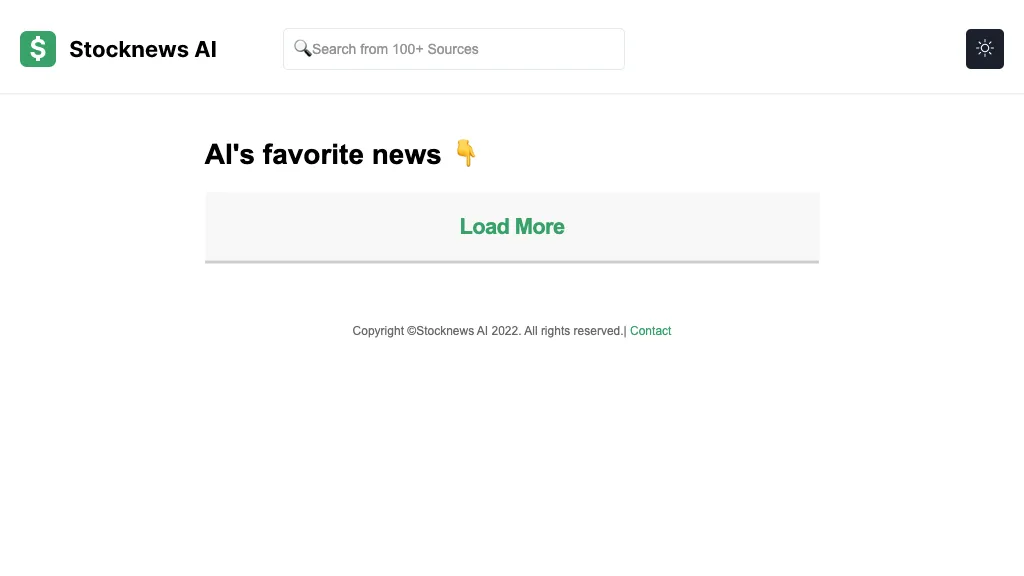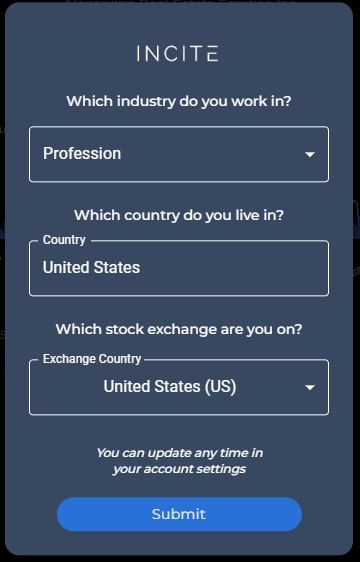20 New Info To Choosing AI Stock Picker Platform Websites
Wiki Article
Top 10 Ways To Evaluate The Market Coverage Provided By Ai Trading Platforms, Which Predict Or Analyze Stocks.
Market coverage plays a crucial aspect in evaluating an AI stock-predicting/analyzing trading platform, as this will determine your ability to access a vast variety of financial and asset markets. Platforms with extensive market coverage permit you to diversify your portfolio and explore opportunities across the globe and can also be adapted to a variety of trading strategies. These are the top 10 strategies for evaluating the market coverage offered by these platforms.
1. Evaluate Supported Asset Classes
Stocks: Ensure your platform is compatible with major stock exchanges like NYSE, NASDAQ LSE and HKEX and includes small, mid and large caps.
ETFs. Make sure the platform provides a range of ETFs, so you get diversified exposure.
Options and futures. Check that the platform can be used with derivatives like futures contracts, options, and leveraged instruments.
Forex and commodities: Check whether the platform can support currency pairs, precious metals, agricultural commodities, and energy commodities.
Cryptocurrencies Check whether the platform supports popular cryptocurrencies such as Bitcoin, Ethereum, and altcoins.
2. Check Geographic Coverage
Global markets: The platform should include major global markets like North America and Europe, Asia-Pacific and emerging markets.
Regional focus: Find out if the platform is focused on particular regions or market segments that are in line with your preferences for trading.
Local exchanges: Verify if your platform supports regional and local exchanges relevant to your business or your business plan.
3. Assess Real-Time against. Delayed Data
Real-time Market Data: The platform needs to offer real-time data on trading that allows for quick decision-making.
Data delayed: Find out whether you are able to get delayed data for no cost, or at a discounted cost. This may be enough for investors who are looking to invest long-term.
Data latency: Make sure the platform minimizes the delay of feeds that are real-time. This is especially important for traders with high frequency.
4. Review the availability of historical data
Historical data depth If the platform is available, ensure that it has vast historical data (e.g. 10, 10+ years) to backtest and analyze.
Granularity: Find out if the data contains daily, intraday weekly, monthly and intraday level of granularity.
Corporate actions: Check if the historical data includes dividends and stock splits.
5. Verify Market Depth and Order Book Data
Level 2 data: Make sure that the platform has Level 2 information for price discovery and improved execution.
Spreads of bids: Make sure that the platform is displaying real-time bid spreads for accurate pricing.
Volume data: Ensure that the platform is equipped with detailed information regarding volume that can be used to analyse liquidity and market activities.
6. Review the coverage of Indices and Sectors
Major indices: Ensure that the platform includes major indices for benchmarking, index-based strategies and other purposes (e.g. S&P 500, NASDAQ 100, FTSE 100).
Sector-specific data : Determine if your platform contains data that is specifically for certain industries (e.g. technology, healthcare and energy) which allows you to conduct targeted analyses.
Custom indices. Make sure that the platform allows you to create and monitoring custom indices based on your criteria.
7. Test the combination of Sentiment and News Data
News feeds: Ensure that the platform has real-time feeds of news and information from credible sources, like Bloomberg and Reuters, for market-moving event.
Sentiment Analysis: Verify whether the platform has sentiment analysis tools made from news, social media, or other sources of data.
Event-driven strategies (e.g. earnings announcements or economic reports) Verify if your platform allows trading strategies that rely on events.
8. Verify Multi-Market Trading Capability
Cross-markets trading: The platform will allow trading on different markets or asset classes using a single user interface.
Confirm that the platform supports multicurrency accounts and currency conversions for international trading.
Support for various time zones It is important to ensure that your platform is able to trade globally on markets across different time zones.
9. Evaluation of Alternative Data Sources
Alternative data: Determine if the platform integrates other sources of data (e.g., satellite imagery, internet traffic, credit card transactions) to gain unique insights.
ESG data - Verify that the platform offers environmental, governance, and social information (ESG). This is important for socially conscious investing.
Macroeconomic Data: Make sure whether the platform contains macroeconomic indicators, such as inflation, GDP and interest rates.
Review the User Feedback and Review the Market Reputation
User reviews: Read user feedback in order to assess the platform's market coverage, reliability, and usability.
Reputation in the industry: Find out whether the platform has been praised as a market leader by industry experts or by awards.
Case studies and testimonials They will showcase the performance of the platform in particular market segments or asset classes.
Bonus Tips
Trial period - Use the free demo or trial to test out the coverage of data and market coverage.
API access: Verify that your platform's API can access market data programmatically in order to conduct custom analysis.
Customer support: Ensure the platform provides assistance for any market-related questions or issues with data.
Use these guidelines to assess the market coverage provided by AI stock trading platforms. Select a platform that has access to the markets, information, and tools you require for successful trading. Comprehensive market coverage will let you diversify, explore, and adapt your portfolio to new market conditions. Check out the most popular trading with ai for website tips including stock ai, best ai stock trading bot free, ai for investing, ai stock market, trading ai, incite, ai trading tools, ai for investment, stock ai, ai stock trading and more.

Top 10 Tips To Evaluate The Community And Social Features In Ai Stock Predicting/Analyzing Platforms
To understand how users learn, interact and share their knowledge in a community It is important to analyze the community- and social-features of AI trade and stock prediction platforms. These features are a great method to improve users' experience and provide invaluable support. Here are the top 10 strategies for evaluating social and community features available on these platforms.
1. Active User Community
TIP: Find a platform that has users who frequently participates in discussions, offers insights and feedback.
Why: A lively community is a space where people can learn and grow together.
2. Discussion Boards and Forums
You can assess the effectiveness of an online discussion forum or message board by evaluating the amount of activity.
Why? Forums allow users to ask questions, talk about strategies and market trends.
3. Social Media Integration
TIP: Determine if the platform integrates with social media channels (e.g., Twitter, LinkedIn) to share insights and news.
Why: Social media integration can increase engagement and offer current market updates in real-time.
4. User-Generated content
Tips: Search for options that let users create and share content like blogs, articles or trading strategies.
The reason: User-generated content encourages collaboration, and it provides diverse perspectives.
5. Expert Contributions
TIP: Check if the platform is populated with contributions from experts in the field, like market analysts or AI experts.
The reason: Expert insights add credibility and depth to community discussions.
6. Real-time chat and messaging
TIP: Check the possibility of instant chat or messaging capabilities to facilitate instant communication between users.
Reason: Real-time communication allows rapid information exchange and collaboration.
7. Community Moderation and Support
Tips: Determine the degree and nature of support provided by your local community (e.g. moderators or customer service representatives).
Why What's the reason? A friendly and positive environment is created by effective moderation, while customer support is quick to resolve user problems.
8. Webinars and Events
Tips: Check whether your platform has Q&A sessions, live sessions or webinars.
What's the reason? These events are great opportunities to get educated about the field and to have direct interaction with experts.
9. User Reviews
Tips - Search for features that allow users to leave feedback about the platform the community, features and other aspects.
Why: User feedback helps identify strengths and areas of improvement in the community ecosystem.
10. Gamification and Rewards
Tip: Determine whether the platform has gaming elements, like leaderboards or badges.
Gamification can encourage users to be more engaged with the platform and community.
Bonus tip: Privacy and security
To ensure the security of data users as well as their activities, make sure that social and community features are protected by robust security and privacy measures.
You can assess these features to determine if the AI trading and stock prediction platform provides an environment that is friendly and encourages you to trade. Take a look at the recommended a knockout post on ai share trading for more info including ai software stocks, best ai stocks, free ai tool for stock market india, best ai stock prediction, ai options trading, ai for trading stocks, ai for trading stocks, ai software stocks, best ai stocks to buy now, ai in stock market and more.
